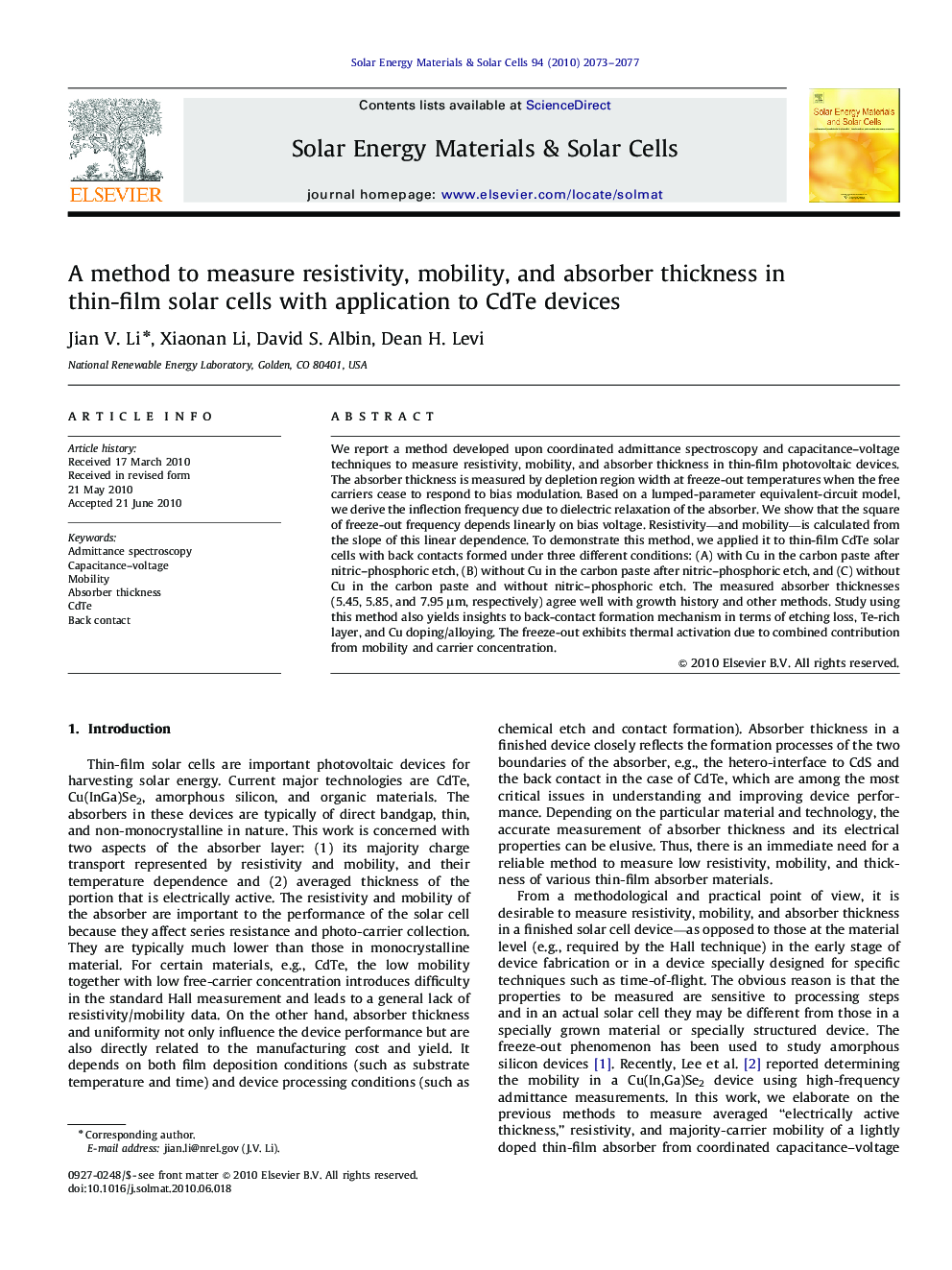| کد مقاله | کد نشریه | سال انتشار | مقاله انگلیسی | نسخه تمام متن |
|---|---|---|---|---|
| 79806 | 49367 | 2010 | 5 صفحه PDF | دانلود رایگان |

We report a method developed upon coordinated admittance spectroscopy and capacitance–voltage techniques to measure resistivity, mobility, and absorber thickness in thin-film photovoltaic devices. The absorber thickness is measured by depletion region width at freeze-out temperatures when the free carriers cease to respond to bias modulation. Based on a lumped-parameter equivalent-circuit model, we derive the inflection frequency due to dielectric relaxation of the absorber. We show that the square of freeze-out frequency depends linearly on bias voltage. Resistivity—and mobility—is calculated from the slope of this linear dependence. To demonstrate this method, we applied it to thin-film CdTe solar cells with back contacts formed under three different conditions: (A) with Cu in the carbon paste after nitric–phosphoric etch, (B) without Cu in the carbon paste after nitric–phosphoric etch, and (C) without Cu in the carbon paste and without nitric–phosphoric etch. The measured absorber thicknesses (5.45, 5.85, and 7.95 μm, respectively) agree well with growth history and other methods. Study using this method also yields insights to back-contact formation mechanism in terms of etching loss, Te-rich layer, and Cu doping/alloying. The freeze-out exhibits thermal activation due to combined contribution from mobility and carrier concentration.
Journal: Solar Energy Materials and Solar Cells - Volume 94, Issue 12, December 2010, Pages 2073–2077